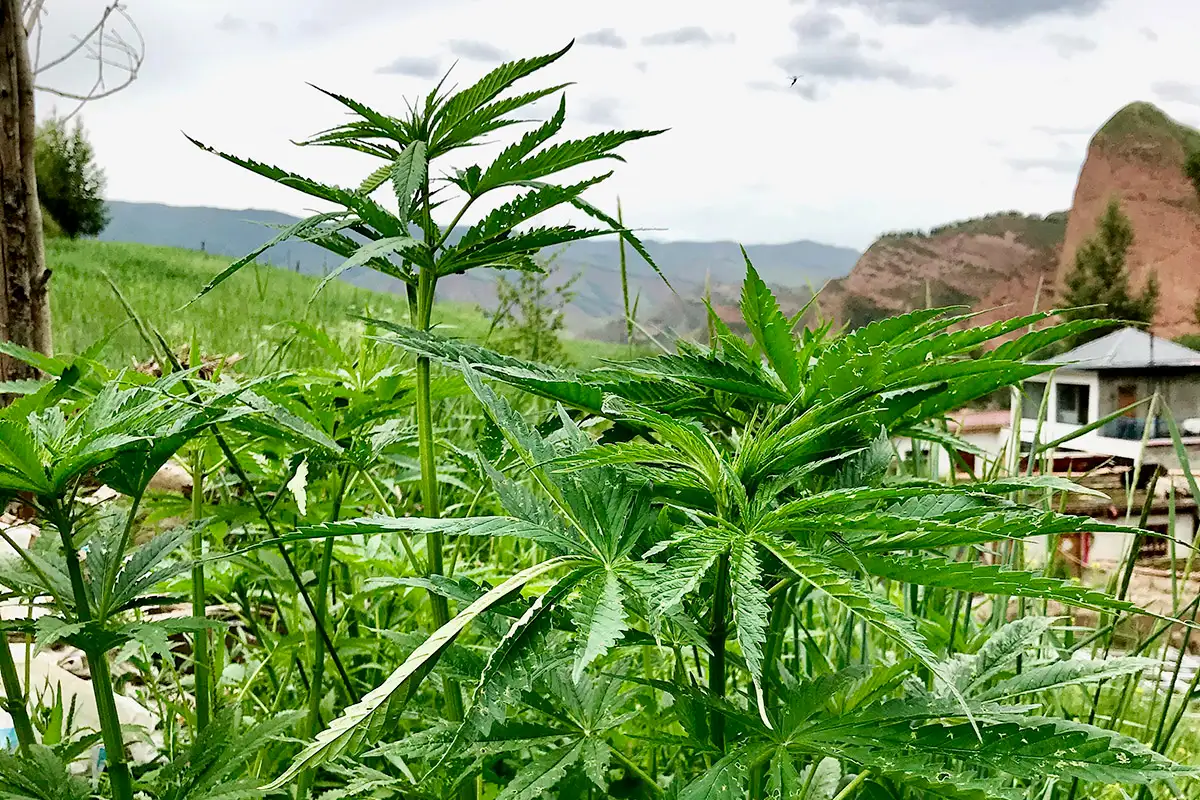No products in the cart.
Cannabis and Climate Change
6 Jul 2023

The cannabis industry has experienced significant growth in recent years, with legalization efforts gaining traction in various states and countries. While the focus has primarily been on the economic and health implications of cannabis, it is crucial to address the environmental impacts associated with its cultivation. Indoor cannabis cultivation, in particular, has come under scrutiny due to its high carbon footprint and energy consumption. In this article, we will explore the environmental implications of cannabis and climate change. As well as, discuss potential solutions to mitigate its effects on climate change.
Understanding the Carbon Footprint of Cannabis Cultivation
Indoor cannabis cultivation has gained popularity due to its ability to provide year-round growth, enhanced security, and quality control. However, the energy requirements of indoor grow facilities are substantial, resulting in a significant carbon footprint. According to studies, the carbon footprint of producing one kilogram of cannabis indoors can range from 2,300 to 5,200 kilograms of CO2, which is equivalent to burning 900 to 2,000 liters of gasoline. The energy-intensive nature of indoor cultivation is primarily attributed to lighting, environmental controls, and maintaining optimal growing conditions.

The use of artificial lighting in indoor grow facilities consumes a substantial amount of electricity. Additionally, maintaining the desired temperature and humidity levels requires the use of heaters, air conditioners, and ventilation systems, further contributing to energy consumption. Carbon dioxide (CO2) enrichment is another common practice in indoor cultivation to enhance plant growth. However, this process also generates greenhouse gas emissions. The combination of these factors results in a significant carbon footprint for indoor cannabis cultivation.
The Impact of Indoor Cultivation on Climate Goals
The increasing trend towards indoor cannabis cultivation poses a challenge to climate goals and sustainability efforts. In countries like Germany, where regulations favor indoor cultivation, the energy consumption of the cannabis industry can be compared to the total household electricity use of major cities. This significant energy demand not only contributes to greenhouse gas emissions but also puts strain on existing energy infrastructure.
The assumption that indoor cultivation is necessary to meet quality and safety standards is a myth that perpetuates the carbon-intensive nature of the industry. Evidence from practice shows that outdoor cultivation can meet these standards by following Good Agricultural and Collecting Practice (GACP) guidelines. Furthermore, in regions where climate conditions are not favorable for outdoor cultivation, importing cannabis from areas with better conditions should be considered instead of resorting to indoor cultivation. This approach would not only reduce the carbon footprint but also provide legal livelihood opportunities for small farmers currently engaged in illicit cultivation.
Embracing Sustainable Outdoor Cultivation
Given the urgency of the global climate crisis, promoting sustainable outdoor cultivation should be a priority for the cannabis industry. Outdoor cultivation offers several advantages, including reduced energy consumption, lower carbon emissions, and a smaller environmental footprint. By harnessing natural sunlight and utilizing regenerative farming practices, outdoor cultivation can minimize the industry’s impact on climate change.
To adapt to changing weather patterns and ensure crop resilience, cannabis growers should focus on selecting genetics suited for their specific climate conditions. Shorter growing cycles can also help mitigate the risks associated with extreme weather events. By prioritizing sustainability and implementing organic principles, growers can reduce their reliance on synthetic inputs and contribute to environmental conservation.
The Role of Research and Innovation
To address the environmental challenges associated with cannabis cultivation, ongoing research and innovation are crucial. Scientists, breeders, and cultivators must collaborate to develop sustainable cultivation practices, resilient strains, and efficient technologies. This includes exploring techniques such as hugelkultur, which can help manage water during heavy rainfall and drought conditions.
Moreover, it is essential to invest in comprehensive data collection and analysis to quantify the carbon footprint of different cultivation methods accurately. This information can inform policymakers, growers, and consumers, enabling them to make informed decisions and promote environmentally friendly practices.
Policy Considerations for a Sustainable Cannabis Industry
As the cannabis industry continues to expand, policymakers must prioritize sustainability and environmental stewardship. Regulation models that solely promote domestic indoor cultivation without considering the carbon footprint are counterproductive to climate goals. Instead, policies should encourage outdoor cultivation in regions with favorable climates and facilitate certified imports from traditional Southern producers.
Additionally, policymakers should incentivize the adoption of sustainable cultivation practices through tax benefits, grants, and education programs. By supporting research and development in sustainable technologies and techniques, governments can contribute to the growth of an environmentally responsible cannabis industry.
Conclusion
The cannabis industry has the opportunity to become a leader in sustainable agriculture by prioritizing environmental responsibility. Addressing the carbon footprint and energy consumption of indoor cannabis cultivation is vital to mitigate the industry’s impact on climate change. Embracing outdoor cultivation, implementing regenerative farming practices, and supporting research and innovation. These are essential steps towards building a sustainable and environmentally conscious cannabis industry. By working together, policymakers, growers, and consumers can ensure a greener future for cannabis cultivation.






